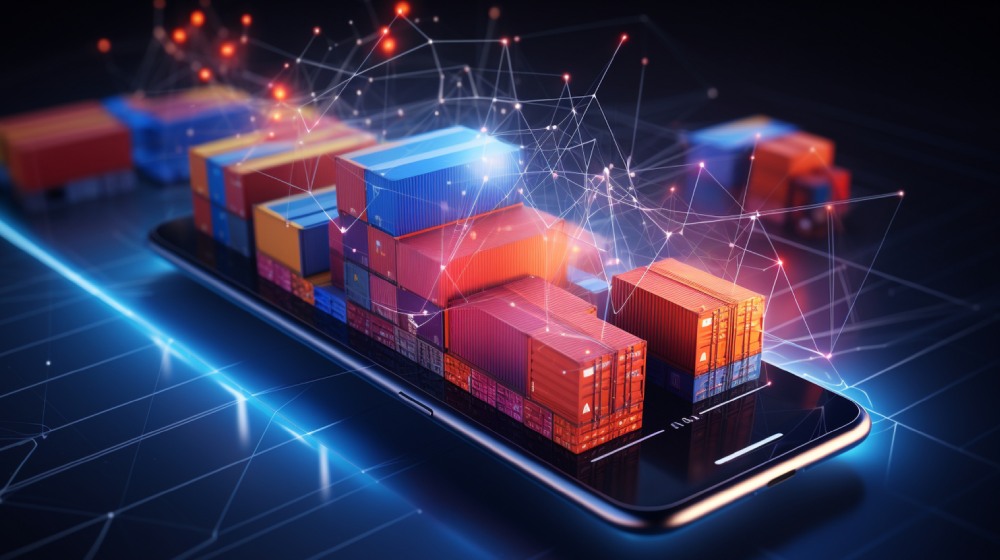The digitization of global society is impacting every key industry, from electronics to consumer goods and even the food supply chain.
The proliferation of the Internet of Things (IoT) has made it possible for food producers, processors, distributors, and frontline retailers to gather more data and obtain granular insights about the flow of foods and beverages across supply lines.
If you’re part of the food supply chain, you must familiarize yourself with the new digital frontier of food distribution. By embracing these changes, you can solve some of your organization’s greatest internal challenges while helping to remedy global problems, including food fraud and shortages. Here’s what you need to know.
The Current State of the Food Supply Chain

The food supply chain isn’t in shambles, as some alarmists would lead you to believe. That said, it’s far from optimal. Over the last few years, global events have strained the food supply chain, impacting developed and lower-middle-income countries alike. However, it’s the poorest countries that have faced the most drastic effects.
According to some estimates, food price inflation has surged above the 5% threshold for 67% of upper-middle-income countries, 79.5% of lower-middle-income countries, and 63.2% of low-income countries. The majority (78.9%) of high-income countries, including the United States, are experiencing high food price inflation.
Numerous factors are driving inflation. One major contributor is geopolitical conflicts in Eastern Europe and the Middle East. Another factor at play is staffing shortages, which impact every level of the food supply chain.
Bottlenecks and inefficiencies undoubtedly play a role as well.
Some of the less efficient aspects of the food distribution process include transportation, refrigeration, and packaging. Rising fuel costs have further compounded the expenses related to transportation and refrigeration. Distributors incur significant costs to carry out these processes and have to pass some of these expenses on to consumers.
Food Fraud Remains a Pressing Issue in 2024

Inflation represents a major hurdle for members of the food supply chain, as well as consumers. Similarly, rising food costs impact everyone and may contribute to reduced consumption. But inflation and geopolitical conflicts aren’t the only big issues the food supply chain faces in 2024. Food fraud remains a persistent challenge.
According to some estimates, food fraud impacts roughly 1% of the global food industry. This translates to $40 billion a year in losses.
It’s difficult to calculate the overall impact of food fraud, as the transition from farm to table is so complex and difficult to trace. The origins of many consumer food products are shrouded in mystery and inconsistencies, compounding the fraud problem.
Historically, the food supply chain has suffered from poor product traceability. Resolving the fraud issue requires end-to-end traceability mechanisms.
Improving the visibility of food products as they move from farm to processing plants to distribution would decrease fraud, promote better efficiency, and perhaps drive down costs. Enter Blockchain, the most promising solution to the food traceability issue.
The Role of Blockchain in Promoting Transparency

Blockchain technology is often mentioned in the same breath as cryptocurrency. While the legitimacy of cryptocurrency is a subject of ongoing debate, the value and benefits of Blockchain are undeniable.
Blockchain is a decentralized, digitally distributed public ledger that exists across a network and is considered immutable, meaning it can’t be altered, deleted, or otherwise manipulated. Due to the distributed nature of Blockchain records, transaction details are preserved even if one block is damaged.
Through Blockchain, it’s possible to detail each stop in a food product’s journey along supply lines. You can trace its origin back to the farm where it was grown or the facility where it was produced. Fraudsters can’t manipulate the records, meaning vendors can account for every link in the chain and mitigate the risks of adulteration.
Benefits of Blockchain

The benefits of Blockchain extend beyond transparency. One of the primary advantages of adding Blockchain to your distribution strategy is enhanced security. The decentralized nature of Blockchain decreases the risk of hacking and data breaches.
Blockchain also introduces significant efficiency improvements, streamlining processes by eliminating intermediaries. You and your trading partners can readily exchange data along the Blockchain, thereby speeding up transactions and reducing costs.
How Farm to Plate Is Leading the Charge

Are you ready to take the mystery out of food supply chain management in 2024? If so, it’s time to embrace the power of Blockchain technology.
With Farm to Plate’s support, you can implement track-and-trace protocols that yield detailed insights about your supply lines. As a tailorable solution, Farm to Plate is composed of plug-and-play modules. We use a pay-per-use model that allows you to adopt and pay for the services you use while keeping total costs down.
Want to learn more? Connect with Farm to Plate today and leave your food supply chain hurdles behind you for good.
Pramod Sajja, CEO & President at Paramount Software Solutions (farmtoplate.io).
